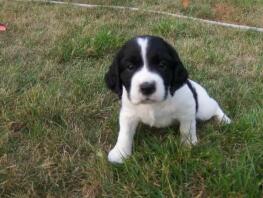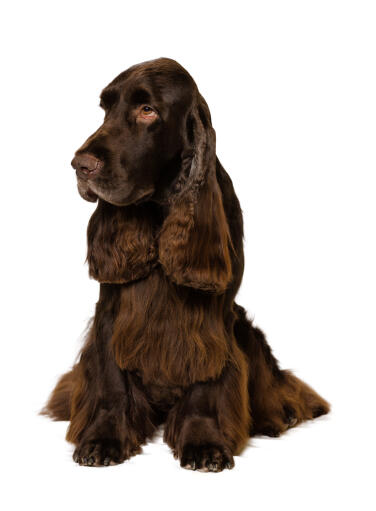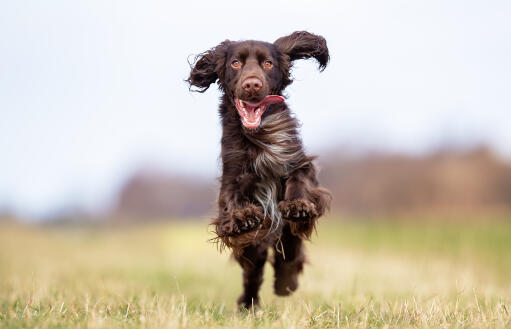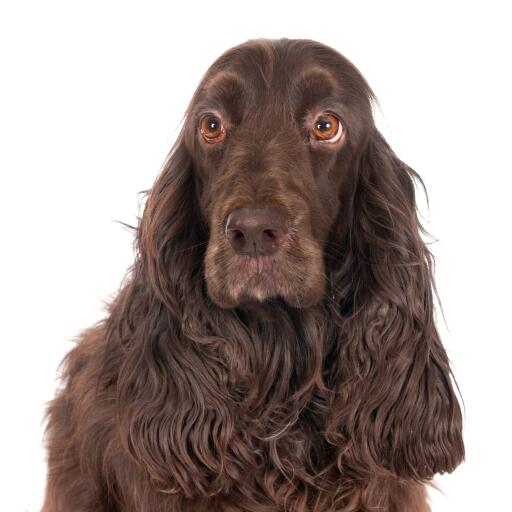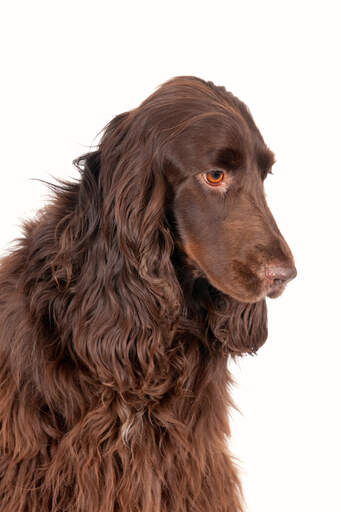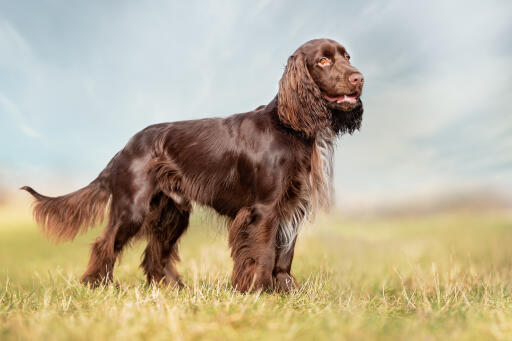Field Spaniel hund





History
The first Field Spaniel appeared around 1850 in England. Larger puppies from Cocker Spaniels were selected originally and these were used as working dogs, in the field. They were used for retrieving game and flushing out birds for the hunters. Later they were bred mainly for showing and over the years, sussex Spaniel, Springer and English Water Spaniel genes were added to bring the breed back. Interest in the breed dropped and they are now considered to be quite rare. The UK kennel club has less than 50 dogs registered.
Behaviour
The Field Spaniel is a loving, devoted, excitable breed, who crave attention from those around them. They make good pets and are fine with children, other dogs and pets as long as they are introduced from a young age. They can be shy with strangers at first, so should be introduced to as many people as possible when they are young. They are an easy going breed and not too demanding. Although not a couch potato, they still have the Spaniel trait of getting excited when going out for a walk, although they are happy to sleep at your feet (or in your bed) when they have had a long walk.
Training should be started early; they are reasonably intelligent and like to learn/please you. Affection and food reward works well. They can be sensitive to moods so harsh words should never be used. Praise is a great motivator for Field Spaniels and using games to make learning more enjoyable will also pay off. They do well in agility, tracking and obedience when well trained. They will do most things for food, but their weight should be watched to prevent obesity. Getting the right balance of food reward/praise is important. They can be mischievous and won't always pay attention to you, especially if they are on a scent.
Field Spaniels have moderate exercise needs and should be walked every day for at lest an hour, plus a play session every day. Scent tracking works well and keeps them mentally active as well as tiring them out.
Their recall is usually good as they don't like to wander too far and generally aren't as excitable out walking as other Spaniel breeds, although they do like to keep busy. A bored Spaniel is a recipe for disaster, so make sure they have a good long walk every day. They were bred as show dogs, but like to have a job to do, even if that means bringing a ball/frisbee back to you.
Their single coat requires a quick daily brush to get rid of dead hair and burrs/tangles, but they are quite clean dogs and don't need bathing that often. Unless they discover a passion for muddy puddles.
As mentioned, they can be greedy, so watch their food intake. They will often eat food they find on the floor. Progressive Retinal Atrophy is also more common, along with cataracts and glaucoma. In older dogs, they can suffer seizures, but this is not that common.
Temperament
Field Spaniels have an active and easygoing temperament. These make good family dogs who will form tight bonds with all thier family members. They get on well with other pets (especially if raised with them from puppyhood) and early socialisation helps them to be sociable with strange animals. These are very sociable dogs who will hate to be left alone without human contact.
Health Problems
Health problems that may affect Field Spaniels include canine hip dysplasia (CHD) and ear infections.
Breed Details
- Status: Common
- Life Expectancy: 10 - 12 years
- Vægt: 16 - 20 kg
- Højde: 17 - 18"
- Rare: Nej
- Coat: Medium - Double
- Grooming Requirements: More than once per week
- Town or Country: Land
- Minimum Home Size: Small House
- Minimum Garden Size: Large Garden
- Breed Type: Gun Dog
- Størrelse: Medium
- Energy Level: Høj
- Exercise Required: Over 2 hours
Billeder af Field Spaniel
